When you're selecting a financial advisor or financial planner to help you reach your various goals, there are many factors to consider. Of course you want a financial advisor that is knowledgeable. For that you'll look at their credentials and experience. To ensure you can trust them you'll look at their disclosures with regulators to see if they've had any claims or infractions against them, as well as see what they have done and will do to act as a fiduciary and reduce conflicts of interest. You'll want to make sure the services they offer line up with your needs. It's also a good idea to have a conversation with them to make sure you like their personality and enjoy talking to them. There's more to selecting a financial advisor than that though.
Fee Structures Can Vary from Advisor to Advisor
Another important aspect is their fee structure. Believe it or not, but there are actually multiple ways that different financial advisors charge and bill for their fees. Among the most common today are the traditional assets under management (or AUM) fee structure and the flat fee structure. AUM fees are a percentage of your assets that the financial advisor manages or advises on. The industry average for this is 1% annually, commonly billed quarterly (i.e. 0.25% every three months). Flat fees, on the other hand, may be charged monthly, quarterly, or even annually. Some may charge an hourly rate.
Flat fee structures come with another option to meet your financial planning needs. Enter advice-only financial planning. Advice-only financial planning was covered in detail in the previous Escient Financial Insights article Why Advice-Only Financial Planning is a Better Choice. Advice-only financial planning is a newer financial planning service offering that is beginning to become more prominent as its benefits are more realized. It's definitely recommended to read that article to get a full understanding of the benefits of advice-only financial planning.
Comparing AUM Fees to Advice-Only Flat Fees
Right now, let's dive deeper into a look at how the investments and fees would differ between a flat fee financial advisor and a financial advisor charging AUM fees.
One of the important things to realize with AUM fees is that as your assets grow in your accounts, the fee you pay will also increase. Granted, a flat fee financial advisor may also increase rates over time, such as an inflation adjustment, but inflation is historically on-average lower than the average annual performance of the stock market (as measured by the S&P 500).
Below are some direct comparisons of an AUM fee model with a flat fee model. In all cases the average annual return is 8%, the AUM fee is 1%, and the flat fee grows by the Federal Reserve's current target for the annual rate of inflation of 2%. The starting amount for the flat fee is $2,400 per year (the annual fee Escient Financial charges for Ongoing Comprehensive Financial Planning for couples and families). There is also an additional $10,000 per year added to the investment accounts as additional savings and contributions. To make the comparison even and more simple, all fees are deducted from investment accounts. Although advice-only financial advisors don't take fees from investment accounts (because they aren't managing them), the calculation is done this way to show a reduction in overall net worth when the fee is paid. It's also possible that paying the flat fees would make some investors unable to save the entire $10,000 annually. Fees charged within various investment funds are not taken into account since those can vary greatly.
$100,000 Portfolio
First up is a portfolio with a starting value of $100,000. What you see in the table below is the value of assets and the fees paid to each advisor after 10 years, 20 years, 30 years, and 40 years.
| STARTING ASSETS = $100,000 | 10 Years | 20 Years | 30 Years | 40 Years |
|---|---|---|---|---|
| Value of Assets with AUM Advisor | $331,086 | $796,371 | $1,718,443 | $3,545,744 |
| Value of Assets with Advice-Only Advisor | $320,128 | $800,244 | $1,838,237 | $4,091,948 |
| Fees Paid with AUM Advisor | $20,072 | $74,372 | $196,003 | $451,069 |
| Fees Paid with Advice-Only Flat Fee Advisor | $26,279 | $58,314 | $97,363 | $144,965 |
First, you'll notice that with starting assets of $100,000, the fees paid to a flat fee advice-only financial advisor could actually be higher than the fees paid to an AUM advisor during the first 10 years. Actually, it's really during the first 15 years. After that, at 20 years, and especially 30 and 40 years, it becomes clear that you can save a lot of money and end up with hundreds of thousands of dollars more because of the lower fees of flat fee advice-only financial planning.
$250,000 Portfolio
Up next is a portfolio with a starting value of $250,000.
| STARTING ASSETS = $250,000 | 10 Years | 20 Years | 30 Years | 40 Years |
|---|---|---|---|---|
| Value of Assets with AUM Advisor | $624,230 | $1,377,305 | $2,869,699 | $5,827,226 |
| Value of Assets with Advice-Only Advisor | $641,549 | $1,501,970 | $3,370,241 | $ 7,436,612 |
| Fees Paid with AUM Advisor | $41,103 | $137,823 | $343,522 | $765,188 |
| Fees Paid with Advice-Only Flat Fee Advisor | $26,279 | $58,314 | $97,363 | $144,965 |
As the value of the assets increases, it begins to become even more clear just how much more you can save with an advice-only financial advisor charging a flat fee. Here, with a starting asset value of $250,000, after 40 years an investor utilizing a flat fee advice-only financial advisor would spend about $520,000 less in fees and end up with greater than $1.6 million in assets more than with an AUM financial advisor.
$500,000 Portfolio
Now let's look at a portfolio with a starting value of $500,000.
| STARTING ASSETS = $500,000 | 10 Years | 20 Years | 30 Years | 40 Years |
|---|---|---|---|---|
| Value of Assets with AUM Advisor | $1,112,803 | $2,345,527 | $4,788,458 | $9,629,696 |
| Value of Assets with Advice-Only Advisor | $1,177,252 | $2,671,513 | $5,923,582 | $13,011,053 |
| Fees Paid with AUM Advisor | $76,153 | $243,576 | $589,388 | $1,288,720 |
| Fees Paid with Advice-Only Flat Fee Advisor | $26,279 | $58,314 | $97,363 | $144,965 |
With a starting asset value of $500,000, after 40 years an investor utilizing a flat fee advice-only financial advisor would spend about $1.14 million less in fees and end up with greater than $3.3 million in assets more than with an AUM financial advisor.
$1 Million Portfolio
Finally, here's what it would look like with a portfolio with a starting value of $1 million.
| STARTING ASSETS = $1 Million | 10 Years | 20 Years | 30 Years | 40 Years |
|---|---|---|---|---|
| Value of Assets with AUM Advisor | $2,089,950 | $4,281,972 | $8,625,976 | $17,234,636 |
| Value of Assets with Advice-Only Advisor | $2,248,657 | $5,010,600 | $11,030,264 | $24,159,934 |
| Fees Paid with AUM Advisor | $146,254 | $455,081 | $1,081,119 | $2,335,785 |
| Fees Paid with Advice-Only Flat Fee Advisor | $26,279 | $58,314 | $97,363 | $144,965 |
Do you happen to have around $1 million in assets that you're looking to invest? If so, after 40 years with a flat fee advice-only financial advisor you would spend about $2.19 million less in fees and end up with about $6.9 million in assets more than with an AUM financial advisor.
The Difference Can Be Jaw-Dropping
The examples above are of investments of limited sizes. If you're starting out with more than $1 million in assets then the difference is even greater, and you can easily stand to save millions of dollars by working with an advice-only financial advisor over the long term. With advice-only financial planning that provides holistic financial planning and advice (like Escient Financial), you get all the services that a financial advisor charging AUM fees will provide, and potentially more than they will provide, with the exception of investment management.
The Case for an Advisor Charging AUM Fees
Let's be honest. There are situations where a financial advisor who manages your investments for you will be the right choice. The biggest being if you're unable or unwilling to manage your investments yourself. Everyone is different and wants to do things in different ways. It's also possible that you could find a financial advisor who actively trades in your accounts, rather than investing in mostly passive investments. Historically, passive investors actually outperform active investors most of the time, but there could still be benefits of some active investing strategies. For more insight into Escient Financial's investing thesis and active investing vs passive investing read the previous Escient Financial Insights article Financial Gurus and Other Fantastic Creatures. However, most financial advisors will use passive investments, or simply create model portfolios with passive and/or active investments that they rebalance automatically on a periodic basis. Most financial advisors, even though they may charge a 1% AUM fee, won't actively manage your investments. There's nothing wrong with hiring a financial advisor who charges AUM fees, as you're simply paying extra for a service that they offer and you see value in that service. It's important, however, to fully understand how much you're paying (especially over the long term) and what services you're getting for those fees.
Advice-Only Financial Advisors Charging Flat Fees Makes Sense...
... if you can and are willing to manage your own investments. The good news is that managing your own investments doesn't mean you can't receive advice. It just means you need to execute the trades on your own (albeit the financial advisor can still assist you with those trades). There are benefits to that, though. For instance, you keep control of your accounts and your assets, and you know exactly where all of your investments are and where your money is. There are also less conflicts of interest with your financial advisor. Additionally, of course, there is the much lower fees that you'll pay over the long term, resulting in more money in your accounts for your to live off during retirement, to enjoy doing the things you want to do, to pass on to your heirs, or to accomplish whatever other goals you may have for you and your family.
If you haven't already, be sure to read the previous Escient Financial Insights article Why Advice-Only Financial Planning is a Better Choice for more detail on the benefits of advice-only financial advisors.
If you like the idea of advice-only financial planning and want to talk to a financial advisor about what they can do for, Escient Financial is here. Go ahead and...
This content is developed from sources believed to be providing accurate information. The information in this material is not intended as investment, tax, or legal advice. It may not be used for the purpose of avoiding any federal tax penalties. Please consult legal or tax professionals for specific information regarding your individual situation. The opinions expressed and material provided are for general information, and should not be considered a solicitation for the purchase or sale of any security. Digital assets and cryptocurrencies are highly volatile and could present an increased risk to an investors portfolio. The future of digital assets and cryptocurrencies is uncertain and highly speculative and should be considered only by investors willing and able to take on the risk and potentially endure substantial loss. Nothing in this content is to be considered advice to purchase or invest in digital assets or cryptocurrencies.
Enjoying Escient Financial’s Insights?
Escient Financial does NOT sell subscriber information. Your name, email address, and phone number will be kept private.
















